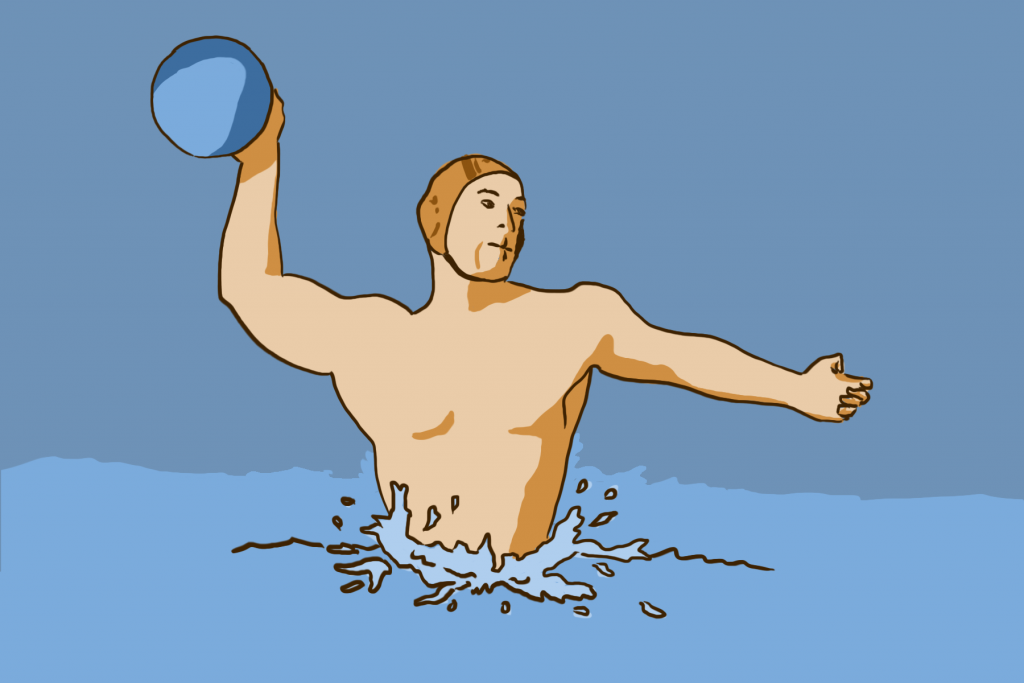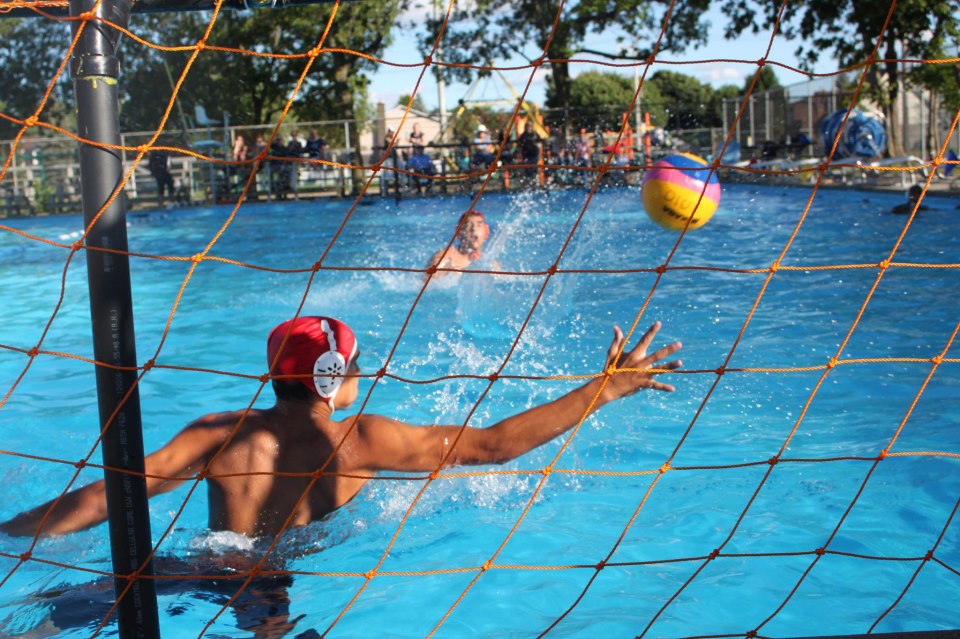Examining the surprisingly rough sport of water polo
“You’re not guaranteed every breath that you’re going to take.” That’s how Dollard-Des-Ormeaux water polo coach Evan Emory describes water polo.
Yes, the sport is tough, but the unknown and underrated game has a lot to offer those who don’t know much about it. Water polo is like handball in water, but also has soccer and basketball elements to it. And, because this is Canada, the toughness of hockey is involved too.
Water polo is a traditional team sport, with four quarters of seven or eight minutes, depending on the league. Each team has seven players, including a goalie, and the aim of the game is to score as many goals as possible. Ideally, the games are played in 25-by-20-metre pools, deep enough that players cannot touch the bottom.
Aesthetically, water polo looks much like handball ,but, in reality, the two sports don’t share many rules. Unlike handball, a water polo player can move freely with the ball, and there is no restricted arch around the net from which a water polo player cannot shoot. The only restriction for attacking players is that they cannot go within two metres of the goalie without the ball.
Like in soccer, if a major foul is committed within five metres of the net, a penalty shot is awarded. There are also corner throws when a defending team last touches a shot that goes out of bounds across the goal line.
Similarly to basketball, a player cannot hold the ball with two hands and there is a shot clock. Teams must shoot the ball within 30 seconds of getting possession. And like in basketball, unlimited substitutions are allowed at stoppages of play.
Water polo is a fast-paced game that requires all players in the pool to contribute both on offence and defence. Transitioning between offence and defence is important in water polo, as all players must hustle back fast. As soon as a team takes a shot, there’s no time to watch it—the players have to be ready to swim back.
Nitesh Agarwal, a water polo player from Montreal, explained everybody in the water plays every position and no one is assigned one set role.
“It’s not like football where there’s offence and defence, or hockey with defencemen and forwards,” Agarwal said. “You’re just as much a defender as top scorer.”
Although water pool seems like a gentlemen’s game on TV, the majority of the action happens underwater. This is where the toughness of hockey—or rugby—comes in.

“It looks a lot of the time like the guys are floating there,” Emory said. “Every second that you’re not hanging off the wall, you’re expending energy.”
“We’re fighting for position, we’re pushing, wrestling, we’re scrapping, we’re hitting each other.” Agarwal added. “No one knows if you kick someone, no one knows if you pull someone underwater or if you’re getting drowned. If you’re a weaker person, you’re going to get swam over.”
With the constant treading water, swimming, physical play and attentiveness to the fast-paced game, it’s easy to get tired playing the game. But for Agarwal, it’s what makes water polo great.
“In the moment, I hated being gassed, but then you kind of realize those are the fun moments—when you have no energy left and you have to haul yourself up,” Agarwal said.
Emory said he believes the tough, physical nature of the game leaves only those who want to play left to play.
“It’s survival of the fittest. The ones who don’t want to do it just get out of the water,” Emory said. “Some guys just become tougher because of it.”
The hungriest-competitor-wins attitude brings a certain culture of discipline to the sport, according to Emory. He said players who come with the wrong attitude just get left behind, and those willing to push and sacrifice for their team will play.
“You’re there for your brothers,” he said.
This passion that water polo players carry led to one of the most famous incidents in the history of the game. In the 1956 Summer Olympics held in Melbourne, Australia, Hungary and the USSR faced off in the semi-final. Tensions were high between the two countries, as Soviet-ruled Hungary was in the midst of a political revolution against the Soviet forces.
The game was physical, and in the fourth quarter, with Hungary up 4-0, Soviet player Valentin Prokopov punched Hungarian star Ervin Zador, who scored two goals in the match, right above his right eye. Zador came out of the pool with blood dripping down his face, which prompted Hungarian supporters to clear the stands and hurl insults at the Soviets. The game is named the “Blood in the Water” match, and remains one of the most famous water polo games in history, according to BBC.
For those hearing about the sport for the first time, fear not—you will not get punched if you try it. And don’t worry, you will get your next breath.




